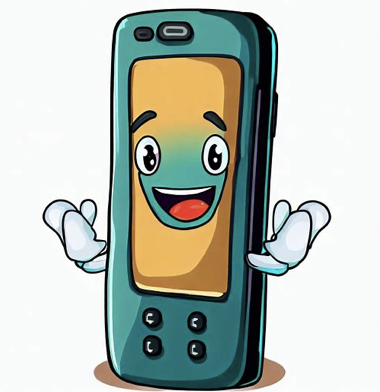In recent years, there has been a growing trend of 13-digit phone numbers.
These longer phone numbers have sparked curiosity and confusion among many individuals.
Who are the owners of these 13-digit phone numbers?
What purpose do they serve?
13-digit phone numbers are generally used for machine-to-machine communication, not for standard telephone services, and are often assigned to devices like SIM cards in IoT (Internet of Things) devices.
Below we look more into 13-digit phone numbers, exploring their origins, usage, avoiding potential scams associated with them, and potential implications.
Table of Contents
The Rise of 13-Digit Phone Numbers
Traditionally, phone numbers have consisted of 10 digits, including the area code.
However, with the increasing demand for phone numbers due to population growth and the proliferation of devices, the need for additional numbers has become apparent.
This led to the introduction of 13-digit phone numbers in certain regions.
One of the primary reasons for the adoption of 13-digit phone numbers is the exhaustion of available 10-digit combinations.
As more and more individuals and businesses require phone numbers, the existing pool of numbers becomes depleted.
To address this issue, telecommunication authorities in some countries have expanded the number of digits in phone numbers to accommodate the growing demand.
Usage and Allocation
The allocation and usage of 13-digit phone numbers vary across different regions. Let’s explore some examples:
1. China
In China, 13-digit phone numbers are commonly used for Internet of Things (IoT) devices.
These devices, such as smart appliances, wearables, and industrial sensors, require unique identifiers to connect to cellular networks.
The additional three digits in the phone number allow for a larger pool of unique identifiers, enabling the seamless integration of IoT devices into the telecommunications infrastructure.
2. Japan
In Japan, 13-digit phone numbers are primarily used for toll-free services.
These numbers are often associated with businesses and organizations that provide customer support or information services.
By using 13-digit phone numbers, these entities can offer a recognizable and easily memorable contact point for their customers.
3. India
In India, 13-digit phone numbers are utilized for machine-to-machine (M2M) communication.
M2M technology enables devices to communicate with each other without human intervention.
This is particularly useful in sectors such as agriculture, healthcare, and transportation, where automated systems play a crucial role.
The 13-digit phone numbers assigned to M2M devices facilitate efficient and secure communication between these devices.
Potential Benefits and Challenges
The introduction of 13-digit phone numbers brings both benefits and challenges. Let’s explore some of them:
Benefits:
- Increased Capacity: The additional three digits in 13-digit phone numbers significantly expand the available number combinations, ensuring a sufficient supply of phone numbers for future needs.
- Enhanced Functionality: 13-digit phone numbers enable the seamless integration of IoT devices and M2M communication, facilitating advancements in various industries.
- Improved Customer Experience: Toll-free services using 13-digit phone numbers provide customers with a recognizable and easily memorable contact point, enhancing convenience and accessibility.
Challenges:
- Transition Period: The transition from 10-digit to 13-digit phone numbers requires adjustments in infrastructure, systems, and user habits. This process may involve significant costs and potential disruptions.
- Compatibility: Some older devices and systems may not be compatible with 13-digit phone numbers, necessitating upgrades or replacements.
- Confusion: The introduction of 13-digit phone numbers may initially cause confusion among users who are accustomed to the traditional 10-digit format.
Avoid Scams Associated with 13-Digit Phone Numbers
13-digit phone numbers are not used for regular phone calls or text messages.
If you receive a call or text message from a 13-digit phone number, it is likely a scam or a mistake.
Do not respond to calls or text messages from 13-digit phone numbers.
Here are some tips for avoiding scams involving 13-digit phone numbers:
- Do not respond to calls or text messages from 13-digit phone numbers.
- If you are unsure about a call or text message, contact the company or organization directly using the contact information on their website.
- Be wary of any call or text message that asks for personal information, such as your Social Security number, credit card number, or bank account number.
- Never click on links in calls or text messages from unknown senders.
If you think you have been the victim of a scam involving a 13-digit phone number, report it to the Federal Trade Commission (FTC) and to your local law enforcement agency.
FAQs – 13 Digit Phone Numbers
1. What are 13-digit phone numbers?
13-digit phone numbers are phone numbers that consist of 13 digits instead of the traditional 10 digits.
These longer phone numbers are used for specific purposes such as IoT devices, toll-free services, and M2M communication.
2. Why are 13-digit phone numbers necessary?
13-digit phone numbers are necessary to address the increasing demand for phone numbers due to population growth and the proliferation of devices.
The additional digits provide a larger pool of unique identifiers for various applications.
3. How are 13-digit phone numbers allocated?
The allocation of 13-digit phone numbers varies across different regions.
In China, they are commonly used for IoT devices, while in Japan, they are primarily used for toll-free services.
In India, 13-digit phone numbers are assigned to facilitate M2M communication.
4. What are the benefits of 13-digit phone numbers?
The benefits of 13-digit phone numbers include increased capacity to accommodate future needs, enhanced functionality for IoT devices and M2M communication, and improved customer experience through recognizable toll-free services.
5. What challenges are associated with 13-digit phone numbers?
The challenges associated with 13-digit phone numbers include the transition period requiring adjustments in infrastructure and user habits, compatibility issues with older devices and systems, and initial confusion among users.
6. Will all phone numbers eventually become 13 digits?
While the adoption of 13-digit phone numbers has been observed in certain regions, it is not guaranteed that all phone numbers will become 13 digits.
The usage and allocation of phone numbers depend on the specific needs and policies of each country or telecommunications authority.
7. Can I still call a 13-digit phone number from a device with a traditional 10-digit dialer?
Yes, you can still call a 13-digit phone number from a device with a traditional 10-digit dialer.
Telecommunication networks are designed to handle calls to both 10-digit and 13-digit phone numbers, ensuring compatibility and connectivity.
8. How can businesses benefit from using 13-digit phone numbers?
Businesses can benefit from using 13-digit phone numbers by providing easily memorable toll-free services, enhancing customer experience and accessibility.
These numbers can also facilitate efficient communication for IoT devices and M2M systems, enabling advancements in various industries.
9. Are there any security concerns associated with 13-digit phone numbers?
There are no inherent security concerns associated with 13-digit phone numbers themselves.
However, as with any communication channel, it is important for users to follow best practices for security and privacy to protect their information and devices.
10. How long will the transition to 13-digit phone numbers take?
The transition to 13-digit phone numbers can vary in duration depending on the specific region and the scale of implementation.
It may involve several years to ensure a smooth transition, including infrastructure upgrades, system adjustments, and user education.
11. Can I convert my existing 10-digit phone number to a 13-digit phone number?
Converting an existing 10-digit phone number to a 13-digit phone number is not a straightforward process.
The allocation and assignment of phone numbers are managed by telecommunication authorities, and the conversion process would depend on their policies and guidelines.
12. Will the introduction of 13-digit phone numbers affect international calling?
The introduction of 13-digit phone numbers in specific regions is unlikely to have a significant impact on international calling.
Telecommunication networks are designed to handle calls between different numbering systems, ensuring seamless connectivity.
13. How can individuals identify the purpose of a 13-digit phone number?
Individuals can identify the purpose of a 13-digit phone number by considering the region and context in which it is used.
For example, if the number starts with a specific prefix associated with toll-free services, it is likely used for customer support or information services.
14. What is M2M communication?
13-digit phone numbers are used for machine-to-machine (M2M) communication. M2M communication is the communication between devices without human intervention.
Examples of M2M communication include:
- Smart home devices, such as thermostats, security systems, and lights, communicating with each other and with the cloud
- Self-driving cars communicating with each other and with infrastructure
- Industrial machines communicating with each other and with central control systems
13-digit phone numbers are necessary for M2M communication because the current 10-digit phone number system is not large enough to accommodate the growing number of M2M devices.
Summary
13-digit phone numbers have emerged as a solution to address the increasing demand for phone numbers in various regions.
They serve specific purposes such as IoT devices, toll-free services, and M2M communication.
While the adoption of 13-digit phone numbers brings benefits such as increased capacity and enhanced functionality, it also presents challenges related to the transition period and compatibility.
Understanding the allocation and usage of 13-digit phone numbers can help individuals navigate this evolving telecommunications landscape.


